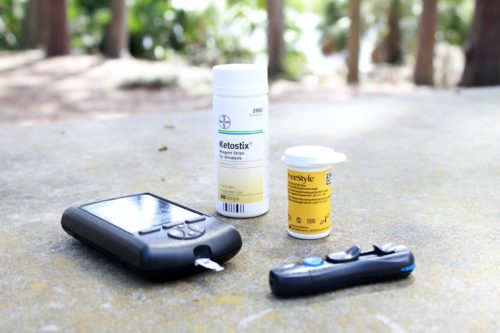
Home Health OASIS Nursing Assessment Documentation Requirements for Hypertension
Basic findings which need to be reported on the OASIS nursing assessments – start of care, resumption, recertification, discharge and weekly visit notes for blood pressure ( including hypertension and hypotension) heart rate monitoring.
Start of Care Assessment Documentation
- Check with the patient or caregiver on their blood pressure and heart rate control. On your initial assessment visit, check with the patient or caregiver if they carry a functional blood pressure monitor and if the numbers are being regularly watched. This information is very important, otherwise the episode could go with patient’s self-monitoring of numbers not reported and without the home health staff realizing patient not having a cuff all the while. This can reflect very poor on the care provided.
- Establish this information on your initial assessment visit and if the patient does not have a cuff, talk to your home health agency and discuss resources to arrange for one.
- Check on the patient independence, caregiver willingness & availability, and compliance with everyday blood pressure and heart rate recording and log maintenance of numbers. We often find individuals who are not compliant with everyday monitoring of the numbers. Establish this information on your initial assessment visit.
- Educating the patient on the side effects of poor blood pressure control and improving their compliance with this task can be an important topic on the list of patient education topics and a measurable goal for the episode.
Documentation for the Weekly Visit Notes
- Home health nurses typically visit the patients once or twice a week. Reporting numbers only on the home health weekly visits and not talking about numbers on the rest of the days in the week is not a healthy practice. Also, it does not offer enough ground for continuing the care if the patient were to be recertified at the end of episode.
- Encourage all your patients for compliance with daily blood pressure and heart rate recordings and log maintenance of their numbers.
- During weekly visits, you should not only report numbers during the visit, but also add a note on how the numbers were doing overall, through the week. In the case of patient’s noncompliance with the monitoring of numbers, document the same on your visit note and notify the physician.
- On all the weekly visits, check for any signs and symptoms of poor blood pressure including hypertension and heart rate control, such as, blurred vision, headaches, nosebleeds, palpitations, chest pain, racing heartbeat, confusion, dizziness, fainting, and fatigue.
- Also, report hypertension numbers consistently falling out of healthy parameters for the needed medication or dose changes. Determine the possible reasons contributing to poor blood pressure and heart rate control, such as, poor compliance with recommended dietary measures, noncompliance with medication intake as recommended, poor management of underlying health conditions, poor compliance with fluid intake and hydration recommendations, poor pain control, and so on. This can help with incorporating appropriate management measures and patient education information on your plan of care.
- With patients in assisted living facilities, memory care units, and group homes, you can check with the facility staff or the nurse station during your weekly visits and obtain a copy of the numbers for the week.
- During your visit, if the blood pressure numbers were high, check if the patient has been compliant with the recommended medication intake for that time of the day. It is common to find patients forgetting to take their hypertension medication. In this case, go ahead and allow the patient to take their scheduled medication. Factors such as, poor pain control, anxiety, restlessness, and physical exercise could also contribute to shoot up of numbers. After 30 to 45 minutes, go for a second reading of the numbers.
- If the numbers were too low, offer the patient a cup of water and allow numbers to settle. After 30 to 45 minutes, go for a second reading of the numbers.
- We should make every possible attempt to see patient safe before we leave their house. Sometimes, the numbers could be grossly out of control and patients could be confused as to whether they had taken their scheduled hypertension medication dose. If the numbers are not settling to safe parameters in a reasonable timeframe, notify the physician regarding the same and seek their intervention. Recommend an emergency visit to promote patient safety and prevent risk for a stroke event or a hypotensive shock.
- Instruct the patient and caregiver to follow closely on signs and symptoms to be alerted to. Filling a weekly pillbox for such patients could be a better option to avoid such incidents in future and risk for possible over or under dosing.
Documentation for the Follow-up Assessments
During all the follow-up assessments include notes regarding
- How the numbers varied lately or over the episode
- Any instances of hypertensive or hypotension related emergencies
- Any instances of poorly controlled tachycardia or bradycardia during the episode
- Any consistent presentation with signs and symptoms of poor blood pressure and heart rate control, such as, headaches and dizziness
- Any instances of reporting to the physician and interventions suggested
- Any emergency visits or hospital admissions for poor blood pressure (hypertension or hypotension) and heart rate control
- Any medication or dose changes made to adjust the numbers to safe parameters
- Patient compliance with and response to the measures suggested
Editor's Pick
Leave A Comment
Related Posts
Transition from OASIS-E to OASIS-E1: Key Changes and Implications for […]
Importance of Clinical Narrative and Nurse Teachings while Documenting Home Health OASIS Assessments
Importance of Clinical Narrative and Nurse Teachings while Documenting Home […]
Navigating the Complexities of Medicare and Medicaid Reimbursement for Home […]
Engaging Your Team Around the IPR: Turning Data into Motivation […]
Engaging Your Team Around the IPR: Turning Data into Motivation […]
